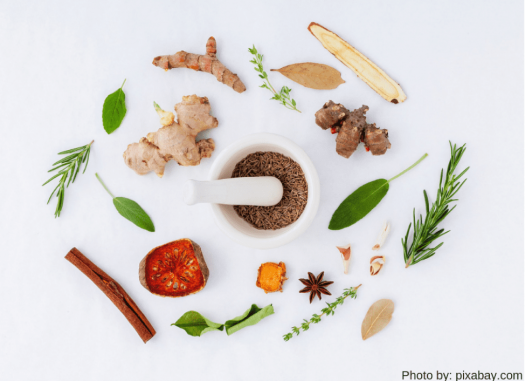By: Annabelle Shaffer, Dietetics senior at University of Illinois, Urbana-Champaign
What is culinary medicine?
Dr. John La Puma is one of the founding fathers of culinary medicine and defines it as “an emerging field that blends the art of food and cooking with the science of medicine”.1,2 The field focuses on utilizing food to prevent disease and improve a patient’s well-being, but does not disregard the effectiveness of pharmaceuticals and conventional medical services.1 Interest in food as preventative medicine has recently grown due to families eating away from the home more frequently, rising healthcare costs, public interest in organic and local farming, increased availability of fast foods, and dissatisfaction with conventional medicine.1
How do we use it?
Culinary medicine has recently been incorporated into undergraduate and medical training programs. Tulane University School of Medicine in New Orleans, LA, founded the Goldring Center for Culinary Medicine which educates patients and medical professionals on not only what to eat, but how to find and prepare it.2 A randomized controlled study performed by the center using the Mediterranean diet for Type 2 Diabetes Mellitus patients found improvements in blood pressure, hemoglobin A1c, and blood cholesterol levels, as well as increases in self-efficacy towards healthy cooking.3
In addition to Tulane University, many research groups have implemented culinary medicine to improve a population’s health and nutrition:
- In Washington, D.C., a study targeting African American women living in public housing decreased caloric intake and caloric intake from fat through seven 90-minute sessions that included hands-on cooking in each lesson and a grocery store tour.4
- The Los Angeles Sprouts program targeting Latino youth in afterschool programs utilizes gardening and cooking classes. Children in the intervention groups have reduced body mass indexes, blood pressure, the rate of weight gain, and increased fiber intake.5
- The University of Southampton aimed to improve the nutrition behaviors of South Asian women who commonly suffer from Iron-deficiency anemia. The Break the Cycle Project created hands-on peer-led cookery clubs which resulted in decreased salt, sugar, and fried food consumption and increased fruit, vegetable, low-fat dairy, and fiber consumption.6
While the field of culinary medicine shows promise in improving a population’s nutrition, more research is needed to establish an effective teaching style, impacts on patient and provider behavior, and training protocol for chefs and medical professionals.7 Additionally, a thorough evaluation of culinary medicine programming’s cost and benefits should be performed to identify their effectiveness and how to best utilize and sustain them.7 One major challenge culinary medicine programming faces is financial. Programs can cost from $5000 – 300,000 and are funded by private donors.7 Dr. Polak and others suggest lobbying for insurance funding and experiments to design a self-sustaining program may be possible solutions.7
Bibliography:
- La Puma J. What Is Culinary Medicine and What Does It Do?. Popul Health Manag. 2016;19(1):1-3. doi:10.1089/pop.2015.0003
- Williams J. Culinary Medicine: A Recipe for Better Health. US News and World Report. https://www.usnews.com/news/healthiest-communities/articles/2018-11-05/in-culinary-medicine-a-recipe-for-better-health. Published 2019. Accessed January 6, 2019.
- Monlezun D, Kasprowicz E, Tosh K et al. Medical school-based teaching kitchen improves HbA1c, blood pressure, and cholesterol for patients with type 2 diabetes: Results from a novel randomized controlled trial. Diabetes Res Clin Pract. 2015;109(2):420-426. doi:10.1016/j.diabres.2015.05.007
- Shankar S, Klassen A, Garrett-Mayer E et al. Evaluation of a nutrition education intervention for women residents of Washington, DC, public housing communities. Health Educ Res. 2006;22(3):425-437. doi:10.1093/her/cyl092
- Davis J, Ventura E, Cook L, Gyllenhammer L, Gatto N. LA Sprouts: A Gardening, Nutrition, and Cooking Intervention for Latino Youth Improves Diet and Reduces Obesity. J Am Diet Assoc. 2011;111(8):1224-1230. doi:10.1016/j.jada.2011.05.009
- Davies J, Damani P, Margetts B. Intervening to change the diets of low-income women. Proceedings of the Nutrition Society. 2009;68(02):210. doi:10.1017/s0029665109001128
- Polak R, Phillips E, Nordgren J et al. Health-related Culinary Education: A Summary of Representative Emerging Programs for Health Professionals and Patients. Glob Adv Health Med. 2016;5(1):61-68. doi:10.7453/gahmj.2015.128
Photo by Pixabay.com















